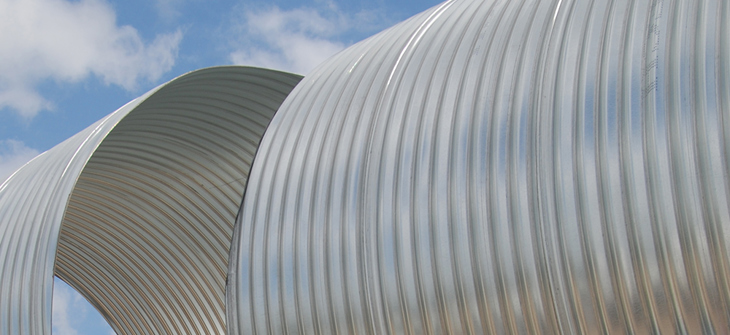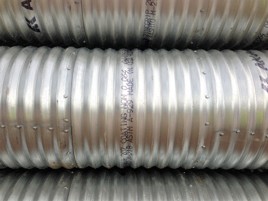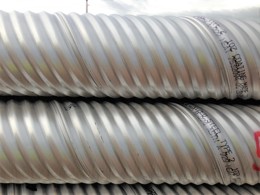
Flow Rate Considerations that May Surprise You
Basic Hydraulics
First thing’s first, let’s talk about some basic hydraulics. Most shorter length culverts are inlet controlled and just about all storm sewers are outlet controlled. So for storm sewers, the flow is limited by the outlet conditions of the pipe and the roughness inside the pipe matters. The primary method to determine the flow rate (Q) of a storm sewer is to use Manning’s equation. "n"=roughness coefficient.
Manning's Equation:
The smoother the pipe, the less the friction, the higher the flow rate since “n” is on the bottom of the equation. Now that we’ve established the basics, let’s talk specifically about CMP (corrugated metal pipe). The first CMP manufactured was an annular riveted pipe versus the current go-to standard CMP which is helically corrugated with a lock seam.


Shown above annular Annular vs. Helical
CMP has "n" values from as low as 0.011 for 12 inch up to 0.027 for 78-inch diameter. Riveted annular pipe is 0.024 for all 2-⅔ corrugations and 0.027 for both 3x1 and 5x1 corrugations.
The difference is in the orientation and angle of the helically wound corrugations. This is true for both round and pipe arch shapes. It allows for better flow and has been verified through testing via Utah State University at the Utah Water Research Laboratory in Logan, Utah – Hydraulics Report No. 279 . In other words, the helical angle gets smaller while the pipe diameter gets bigger along with the "n" value. HEL-COR starts out at 0.011 and ends up approaching the same value for riveted pipe at 78” with 0.027 at the upper end.
You can see below what a difference the roughness can make in terms of the flow rate. Manning’s equation reduces to the following simple formula of the ratios of the "n” and the diameter to compare the two different pipes.

24” FLOW RATE EXAMPLE CALCULATION
| Helical | Annular | |
| Manning's coefficient of CMP | 0.015 | 0.024 |
| Inside diameter of CMP | 24 | 24 |
| Percent increase in flow, Helical vs. Annular | 160 | |
Many industries still have a practice of mandating that all CMP use an ‘n’ value of 0.024 and 0.027 as stated above. That is not the case and has not only been verified by Utah State, but also the FHWA (FHWA-TS-80-216).
So, the shocker is that not all CMP corrugations are created equal nor have the same hydraulic behavior. Make note when you are asked by your local municipality to only use 0.024 or 0.027, that there are living, breathing documents with test data to show that lesser n values can be used varying from 0.011 at the lowest end of the range. Keep this in mind when designing for hydraulic performance. Not all pipes are the same.
